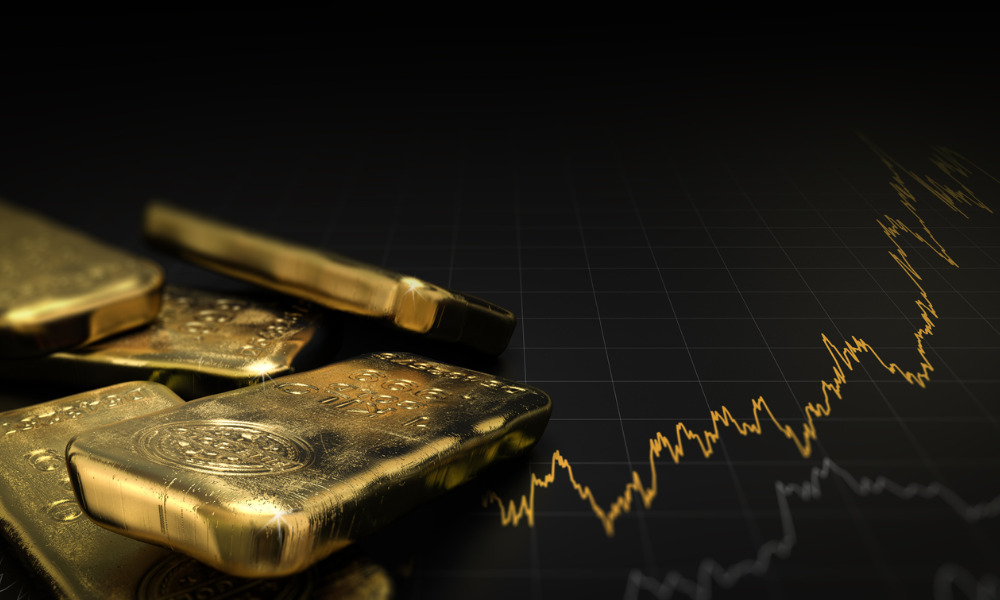Breakdown of correlation between gold price and dollar strength has paved path to new highs

In the world of finance, jaded professionals have learned to regard the sentence “this time it’s different” with more than a little doubt; to some, it’s fit only to be used ironically, much like an inside joke. But as applied to the recent momentum in gold prices, it might very well be appropriate.
As observed by Yvo Timmermans, CFA of JLP Asset Management and Paul van den Noord of the Amsterdam School of Economics, the price of gold and the U.S. dollar index have largely tended to be negatively correlated from 2000 to 2020, while gold prices and the money supply, as measured by M2/GDP, have tended to be positively correlated.
“This … reflects how US dollars and gold have served as central banks’ official reserves and how in the Bretton Woods system, gold was denominated in US dollars,” the pair wrote in a blog post published by the CFA Institute.
With looser U.S. monetary policy and declining returns on risk-free dollar assets, investors have come to expect the U.S. dollar index to decline as M2/GDP rises, leading to an increase in gold prices. In the current environment, the rapid rise in the U.S. money supply promoted by COVID-19 stimulus efforts has come with rallying gold prices as predicted – but the weakening dollar has apparently not dulled the yellow metal’s shine.
“Since hitting bottom in late 2015, gold has been on the rise, with no end in sight,” Timmermands and van den Noord said. “As Europe has moved gradually towards more of a fiscal union, as we predicted, and the United States has struggled with its response to the COVID-19 pandemic and social and political unrest, the [U.S. dollar index] has only fallen slightly. This despite accelerated U.S. monetary expansion in the face of the pandemic.”
The two hypothesized that the European Central Bank’s (ECB) embrace of quantitative easing has warped the negative relationship between gold prices and the U.S. dollar index. Effectively, it boosted both gold and the dollar, with Euro/U.S. dollars trading broadly around the 1.1 level over the past five years, compared with 1.2-1.5 in the five years prior.
With the two largest central banks printing so much money to combat the COVID-19 crisis, the dollar and euro should have lost value against gold. But the gold rally, along with the heighted investor unease that it embodies, predated the pandemic; the continuing rise of populist movements around the world, Timmermands and van den Noord argued, supports the case for investor anxiety and may hint at a reshuffling of the world order, with globalization apparently shifting into reverse in many areas.
“With already-strained geopolitical and financial structures further stressed by the pandemic, soaring gold prices may signal trouble ahead,” they said.
In the long run, they predicted that the current distortion in gold-dollar correlations should resolve itself. Whatever happens, they argued, the U.S. dollar will move according to the relative strength of European and U.S. economy and policy frameworks.
“At times like these when monetary and fiscal policy have never been looser, gold may continue to climb to new heights,” they said.
Follow WP on Facebook, LinkedIn and Twitter



